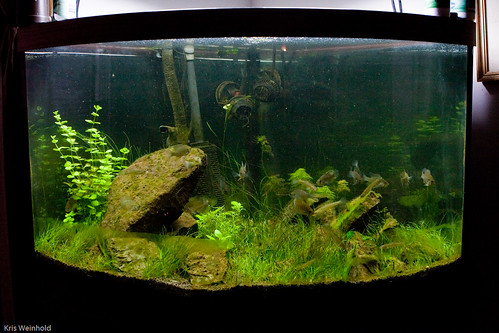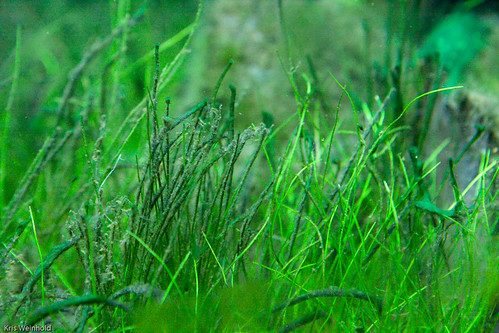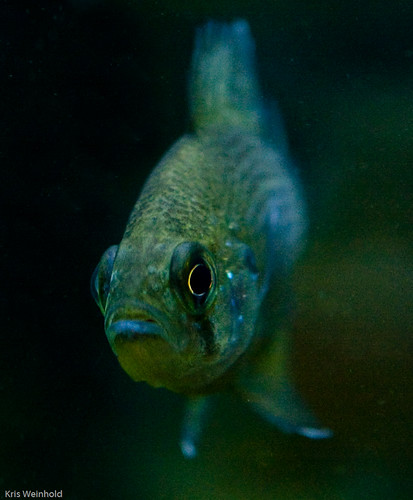54G – Two Months
April 2nd, 2009It’s been roughly two months since I converted my 54G aquarium into a native plants/fish tank, and thus far it’s been a bit of a bumpy road, with a few bright spots here and there. I’ve been having some algae issues due to very high nitrate levels leeching out from the ADA Aquasoil. I’ve never had problems like this before with Aquasoil, so I’ll give it the benefit of the doubt for now.
Despite having a bit of algae, the hairgrass is really starting to carpet the aquarium. The rocks are pretty well coated in fuzz algae, but I’ve recently started dosing more macros (N/P), and it has improved a little bit. Right now, I’m seeing better plant growth than I’ve seen in awhile, so I’m confident that given a little more time, I’ll be algae free.
All of the bluespotted sunfish and banded killifish are in the aquarium now. They’re an interesting group of fish. Sometimes, I’ll look in the tank and it’ll look like an overcrowded zoo. Other times, I’ll look and not a single fish is visible, as they’ve blended themselves in-between rocks or in the hairgrass. I don’t see anyone getting beat up, so I think I’m okay in terms of fish load.
The killifish seem to especially like to dart in and out of the hairgrass. They’re also the fish that are more likely to accept commercial pellets, whereas the sunfish are hit or miss with anything but live blackworms. (About half of the sunfish will eat pellets, but not vigorously like commercially raised fish.)
Overall, I’m happy with the direction of this aquascape, but I am looking forward to warmer weather so that I can go out and collect a few of the plants I ultimately want to feature in this tank. Comments/critiques welcome!




April 3rd, 2009 at 1:39 am
Looking good to me and a great idea.
April 3rd, 2009 at 9:59 am
Kris – is there such a thing as a field guide to the native aquatic plants of the Central Atlantic States? If not, what source of information do you use to identify native species?
Last week I took my family to a slow-moving, marshy little creek to look for Spring peepers (Pseudacris crucifer) – though we heard them singing close-by, we didn’t see any adults … despite the chill, though, there were already plenty of tadpoles churning up the water – AND there was plenty of aquatic foliage already growing densely in the creek. Based on some of your previous postings, I think one of the plants was some sort of Ludwigia species, though none of it was emersed like the plants in your photos (maybe it’s too early). I have no idea about the other species I saw, though.
I’d love to have a little pocket field guide to native aquatic plants, to take with me on such outings, if such a thing exists (if it does, though, it’s not in my local library!).
April 3rd, 2009 at 4:55 pm
Hi Mark, I don’t know of a portable field guide, but there is a pretty comprehensive reference that should be useful for you. It is geared more toward the botanist than the hobbyist, so be forewarned if you’re not looking for that:
Aquatic and Wetland Plants of Northeastern North America, Volume I
Aquatic and Wetland Plants of Northeastern North America, Volume II
As for that Ludwigia you saw, I would almost bet it was Ludwigia palustris, as it’s quite prevalent in the area. Thanks for the comment!